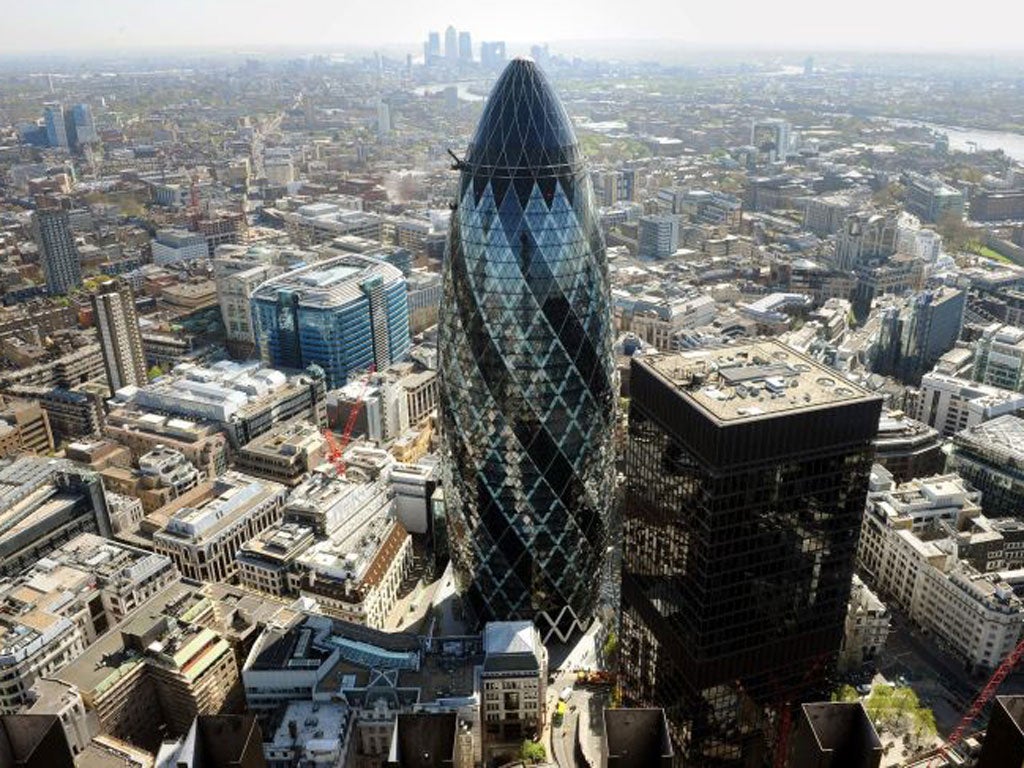London gets first dedicated digital terrestrial TV channel as ESTV launches London Live
Free-to-air channel will provide high quality coverage for every area of the city

Your support helps us to tell the story
From reproductive rights to climate change to Big Tech, The Independent is on the ground when the story is developing. Whether it's investigating the financials of Elon Musk's pro-Trump PAC or producing our latest documentary, 'The A Word', which shines a light on the American women fighting for reproductive rights, we know how important it is to parse out the facts from the messaging.
At such a critical moment in US history, we need reporters on the ground. Your donation allows us to keep sending journalists to speak to both sides of the story.
The Independent is trusted by Americans across the entire political spectrum. And unlike many other quality news outlets, we choose not to lock Americans out of our reporting and analysis with paywalls. We believe quality journalism should be available to everyone, paid for by those who can afford it.
Your support makes all the difference.London is to have a dedicated free-to-air television channel for the first time, the broadcasting watchdog Ofcom has announced.
The new London Live channel will broadcast to around 4 million homes and be run by Evening Standard Television (ESTV), a company wholly-owned by Evgeny Lebedev, owner of the London Evening Standard , The Independent and i newspapers.
ESTV beat competition from four rival bids to host the new service, which will enjoy a prominent position at channel 8 on the Freeview electronic programme guide. It will also be shown at channel 117 on Sky and on Virgin, IPTV and other platforms. London Live will utilise the editorial resources of both the Evening Standard and The Independent.
Announcing its decision this morning, Ofcom said: “ESTV demonstrated the greatest understanding of London’s diverse communities by putting forward proposals which would allow representation of those communities whilst not excluding others as a result.”
The broadcast regulator was impressed with plans in the ESTV bid for “hyper local” coverage of individual districts of the capital on the web-based part of the London Live service. “ESTV’s proposals…provided important opportunities for close local community involvement, taking into account, in particular, its proposals for [Internet TV] services in each London borough which would be included in its programming commitments.”
The venture represented “an exciting opportunity”, said Mr Lebedev.
“Our excellent team of journalists in the capital have the best contacts, knowledge and understanding of the London scene,” he said. “Through the Evening Standard and Independent, we have proved time and again that we can deliver fast, accurate, high quality breaking news, features and analysis and we are looking forward to applying these skills to London Live.”
Commercial media were enthusiastic about the new outlet. “This is the biggest single licence awarded since Channel 5 - there’s no doubt that, out of the regional TV licences, the London licence is the most valuable,” said Adrian Drury, lead analyst at Ovum.
He said the service had great potential for integrating commentary from social media into hyper local news coverage. “There are aspects of the service that show really interesting vision about how they see local television today,” he said. “Part of that is their plan to have hyper local video features for each of the London boroughs on the web-delivered part of the service. They’re going heavily after live telecasting with social content integrated – so you will see not just what the news desk says but also what the Twittersphere and Facebook think.”
Jess Evans, associate director at Carat, said she expected the service to be popular with advertisers. “Clients want multi-format solutions - we can’t think about siloes in media anymore. The same consumer will be watching TV, taking something online and reading in print. This gives us an extra way to access them and integrating social media embodies that.”
In May 2012, Ofcom invited applications to run local TV services in 21 local areas. The regulator received 57 applications to run the services, including five applications for the London licence.
As well as broadcasting on digital terrestrial television (DTT), it is anticipated that local TV channels might offer their services on satellite, cable and online.
Ofcom has now awarded 15 local TV licences, as well as the multiplex licence, and will make further licence awards in the coming months. Other new local television channels, which could begin broadcasting later this year, include Made in Cardiff, Mustard (Norwich), That’s Oxford and Notts TV.
Join our commenting forum
Join thought-provoking conversations, follow other Independent readers and see their replies
Comments